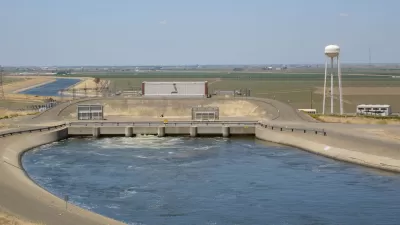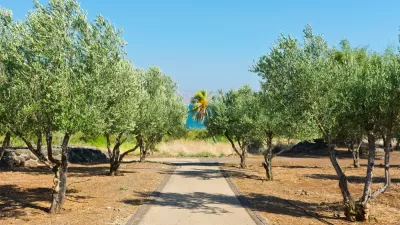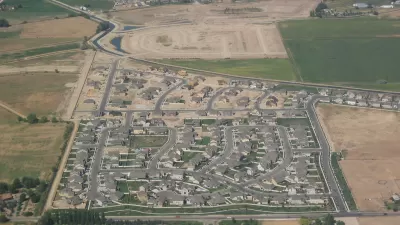A new report from the U.S. Department of Agriculture’s Economic Research Service tracks trends in the size and production of the country's farms. Even though the size of the average farm has steadily increased, "there are more small farms than ever."
As you may imagine, industrialized agribusiness along with gains in productivity and the rise of contracts have worked to steadily increase the average size of America's farms, finds the USDA's report.
Yet, writes Lydia DePillis, "[e]ven while the average size of farms is going up, there are more small farms than ever, especially in small states with farmland preservation programs like Massachusetts and Rhode Island. Community-supported agriculture, plus the local and organic food movement, are starting to show up in the numbers. It’s the mid-sized farm, between 100 and 500 acres, that’s disappearing."
"And here’s the second thing that’s wrong about our understanding of the disappearance of family farms: 96.4 percent of the crop-producing farms in the U.S. are owned by families, and they represent 87 percent of all the agricultural value generated (non-family owned farms are defined as “those operated by cooperatives, by hired managers on behalf of non-operator owners, by large corporations with diverse ownership, and by small groups of unrelated people”)," she adds. "That hasn’t changed since about 1996."
FULL STORY: Farms are gigantic now. Even the “family-owned” ones.

Maui's Vacation Rental Debate Turns Ugly
Verbal attacks, misinformation campaigns and fistfights plague a high-stakes debate to convert thousands of vacation rentals into long-term housing.

Planetizen Federal Action Tracker
A weekly monitor of how Trump’s orders and actions are impacting planners and planning in America.

San Francisco Suspends Traffic Calming Amidst Record Deaths
Citing “a challenging fiscal landscape,” the city will cease the program on the heels of 42 traffic deaths, including 24 pedestrians.

Defunct Pittsburgh Power Plant to Become Residential Tower
A decommissioned steam heat plant will be redeveloped into almost 100 affordable housing units.

Trump Prompts Restructuring of Transportation Research Board in “Unprecedented Overreach”
The TRB has eliminated more than half of its committees including those focused on climate, equity, and cities.

Amtrak Rolls Out New Orleans to Alabama “Mardi Gras” Train
The new service will operate morning and evening departures between Mobile and New Orleans.
Urban Design for Planners 1: Software Tools
This six-course series explores essential urban design concepts using open source software and equips planners with the tools they need to participate fully in the urban design process.
Planning for Universal Design
Learn the tools for implementing Universal Design in planning regulations.
Heyer Gruel & Associates PA
JM Goldson LLC
Custer County Colorado
City of Camden Redevelopment Agency
City of Astoria
Transportation Research & Education Center (TREC) at Portland State University
Jefferson Parish Government
Camden Redevelopment Agency
City of Claremont





























